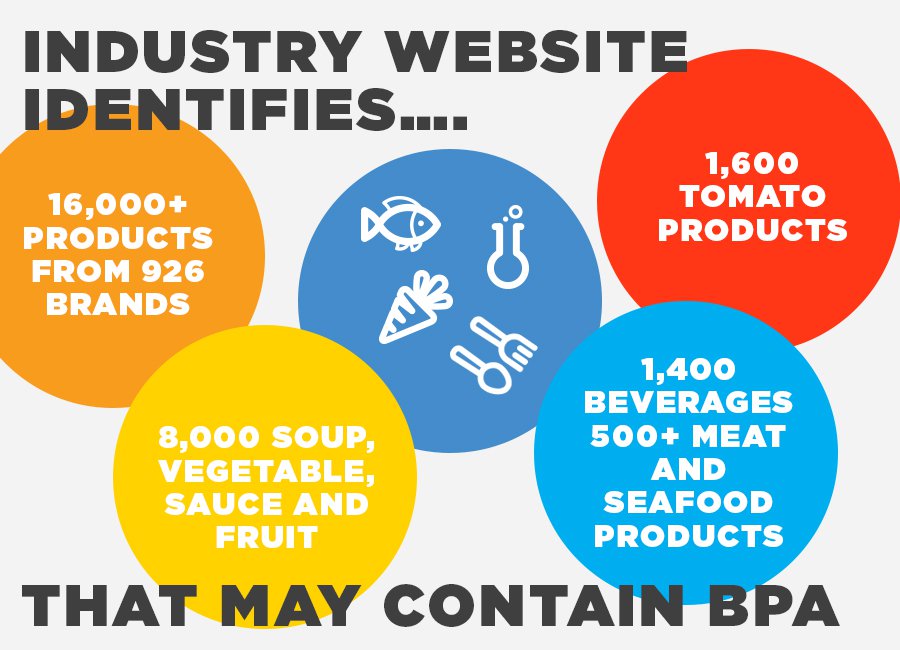Toxic Plastic Food Storage
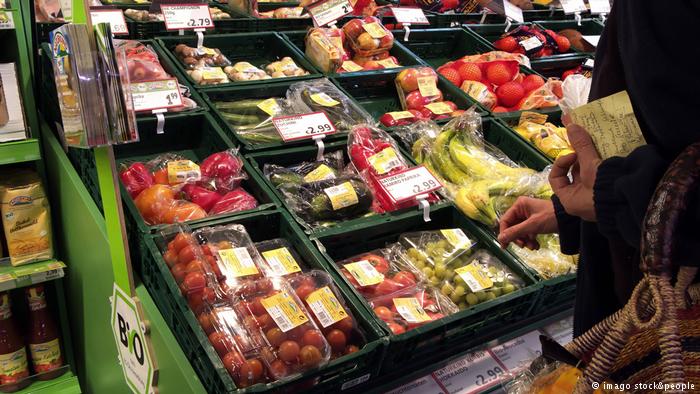
Are your food containers dangerous to your health? Many chemical additives that give plastic products desirable performance properties also have negative environmental and human health effects.
These effects include
- Direct toxicity, as in the cases of lead, cadmium, and mercury
- Carcinogens, as in the case of diethylhexyl phthalate (DEHP)
- Endocrine disruption, which can lead to cancers, birth defects, immune system suppression and developmental problems in children.
In the news just this week,a report ranked Whole Foods the worst of five major grocery chains when it comes to chemicals found in food packaging. The studies found high levels of Fluorine in five of the 17 items tested at the store, four of which were containers for its salad and hot food bar. The company responded by removing all the coated paper products in question and is in search of a biodegradable replacement. This report should make us all pause and think about the toxicity of food containers in our own homes.
The reality is that plenty of products in grocery stores—and your kitchen cabinets—may still be leaching toxic chemicals into your food and drinks.
Hazardous Food Storage

1. Polyethylene terephthalate (PET or PETE)
Polyethylene terephthalate (PET or PETE) is one of the most common types of plastic and is commonly found in bottles of soda, juice, water and cough syrup and jars of peanut butter. The bottoms of these containers are usually stamped with the chasing arrows symbol and the number 1, the code for PET.
Other sources include: Water and soda bottles, carpet fiber, chewing gum, coffee stirrers, drinking glasses, food containers and wrappers, heat-sealed plastic packaging, kitchenware, plastic bags, squeeze bottles, toys.
HEALTH CONCERNS: Suspected Human Carcinogen
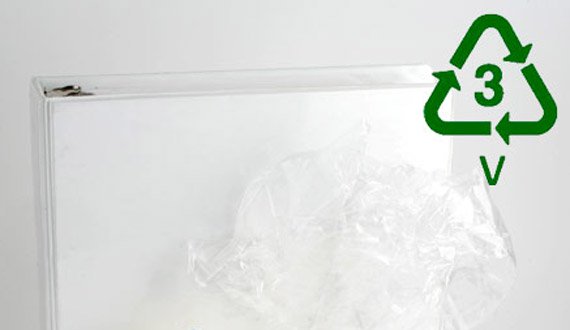
3. Polyvinyl chloride (PVC)
Polyvinyl chloride, or No. 3 PVC, is found in shower curtains, meat and cheese wrappers, ring binders, some bottles, plumbing pipes and building materials. Commonly called vinyl, PVC and closely related PVDC differ from other vinyls, which lack the toxic chloride. PVC continues to be used in many toys.
HEALTH CONCERNS: Can cause cancer, birth defects, genetic changes, chronic bronchitis, ulcers, skin diseases, deafness, vision failure, indigestion, and liver dysfunction
6. Polystyrene, or Styrofoam
Polystyrene, also known as Styrofoam, is used in disposable cups and take-out food containers, packing peanuts, trays and egg cartons. Most fast-food chains, including McDonald’s, phased out polystyrene for sandwich containers more than 20 years ago.
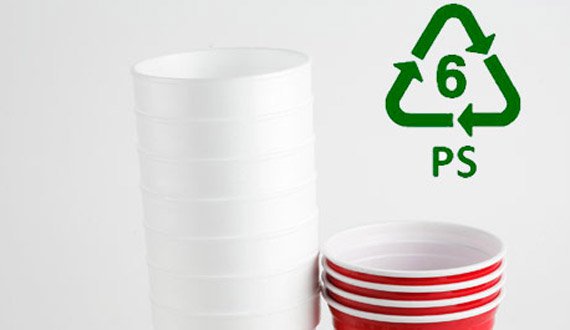
Many food containers for meats, fish, cheeses, yogurt, foam and clear clamshell containers, foam and rigid plates, clear bakery containers, packaging “peanuts”, foam packaging, audio cassette housings, CD cases, disposable cutlery, building insulation, flotation devices, ice buckets, wall tile, paints, serving trays, throw-away hot drink cups, toys
HEALTH CONCERNS: Can irritate eyes, nose and throat and can cause dizziness and unconsciousness. Migrates into food and stores in body fat. Elevated rates of lymphatic and hematopoietic cancers for workers.
PFAS/PFCs
Per- and polyfluoroalkyl substances (PFASs, also sometimes called PFCs) are synthetic chemicals that are used in a number of products to make them more grease, stain, and water-resistant. These substances, also called fluorinated chemicals, are found in grease-resistant food packaging, or fast-food wrappers, pizza boxes, and microwave popcorn bags.
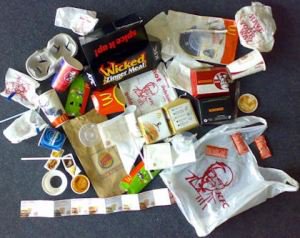
In a test of more than 400 fast-food wrappers, paperboard containers, and beverage containers, researchers found that almost half—46 percent—of the fast-food wrappers and papers and 20 percent of paperboard samples contained detectable amounts of these chemicals.
PFASs are highly stable and highly persistent, which means they linger and don’t break down with heat or cold. They can also accumulate in the body. What’s more concerning is the many places in which you can come into contact with the chemicals. They are also found in carpet, waterproof apparel, non-stick cookware, and more.
HEALTH CONCERNS: PFASs are associated with cancer, thyroid disease, and developmental problems, in addition to other health issues
Phthalates
Phthalates are a type of plasticizer added to plastics ingredients to make them soft and flexible. They are part of a group of plastics called polyvinyl chloride (PVC). They’re found in plastic wraps and some commercial food containers. They’re especially prominent in commercial plastic wraps.
Phthalates can leach into foods that come into contact with the plastics. Fatty and oily foods are especially efficient at wicking the chemicals from food, and heating the plastic increases the rate at which the chemicals can transfer.
HEALTH CONCERNS: Research is very limited, some studies suggest phthalates may lead to early onset of puberty, reproductive defects, lower sperm count, and other health issues. The effects are most troublesome for children, because their smaller bodies have a higher rate of exposure to the chemicals than larger adult bodies.
7. Polycarbonate, with Bisphenol A BPA (#7)
BPA is now widely known toxin in recent years. EWG reported in an article in February 2018 of the damaging effects of BPA on people. The Centers for Disease Control and Prevention found BPA in the urine of more than 90 percent of Americans sampled. In 2009, tests commissioned by EWG were the first to find BPA in the umbilical cords of nine of 10 infants sampled.

Because food packaging is the primary source of exposure, it stands to reason that BPA levels in our bodies are affected by what we eat and how that food is packaged. Even “microwave safe” plastics can leach BPA. Some migrate more of the chemicals into food when the plastics are heated, washed in the dishwasher, or cut/scratched, like what can occur when you use a fork or knife in the container.
BPA, a type of polycarbonate, is a major ingredient in many plastics and can liners and was used widely in baby bottles and sippy cups for decades. In 2012, the U.S. Food and Drug Administration (FDA) banned the use of BPA in baby bottles, citing potential harm to the brains and reproductive development of infants and children.
Researchers have known for decades, since 1936, that BPA mimics estrogens and binds with the same receptors as the hormone throughout the human body. The exposure to the chemicals has been associated with increased breast cancer risk, obesity, and reproductive abnormalities, in addition to other health effects. Still, the chemicals have been used widely since the 1950s.
HEALTH CONCERNS:
BPA acts like estrogen in the body. It disrupts hormones, affects brain development and metabolism, and harms the reproductive system. Evidence suggests the developing fetus and young child are most at risk, but adolescents also appear uniquely vulnerable. BPA has also been linked to cancer, heart disease and other serious disorders.
Scientists have linked very low doses of bisphenol A exposure to cancers, impaired immune function, early onset of puberty, obesity, diabetes, and hyperactivity, among other problems (Environment California)
EWG continues in their article some startling concerns.
In 2016, EWG created a database of about 16,000 processed foods and drinks that might be packaged in materials that contain BPA. In California, products packaged in materials with BPA must carry a warning label on the package or store shelves.
As the food industry scrambles to find alternatives to BPA, concern has grown that without appropriate oversight, food companies will substitute similar chemicals or new chemicals that could be just as harmful or even more harmful. A National Toxicology Program study of 24 replacement chemicals found that many already in use are structurally and functionally similar to BPA, and, just like BPA, may harm the endocrine system.
BPS is an endocrine disruptor that mimics hormones and blocks the action of other hormones. In short, it’s almost the same bad chemical with the same toxic results.
5 Steps to reducing BPA and potentially reducing other plastic toxins:
- Substitute fresh, frozen or dried food for canned.
- Limit how many packaged foods you eat.
- For those who cannot avoid foods in BPA-lined cans, rinsing the food in water may help lower the level of BPA in the food. Bonus: Rinsing cuts back on other additives too, such as sodium on beans or sweet syrup on fruit.
- Never heat food in the can. Transfer it to a stainless steel pot or pan for stovetop cooking, or microwave in glass – not plastic.
- Search for your family’s favorite foods and beverages in EWG’s BPA product list. If they are packaged in containers made with BPA, look for alternative products in EWG’s Food Scores. Tip: Use the BPA-free filter function when searching.
SOURCES:
- http://www.Smartplanet.com
- http://www.ecofriendlylink.com/blog/toxic-fast-food-packaging/
- https://www.myrecipes.com/healthy-diet/toxic-plastic-food-storage-products
- https://fox2now.com/2018/12/13/whole-foods-hot-bar-containers-linked-to-dangerous-chemicals/.
- https://ecologycenter.org/factsheets/adverse-health-effects-of-plastics/#plastichealthgrid
- Centers for Disease Control Report, “National Report on Human Exposure to Environmental Chemicals,” 2001.
- Dadd, Debra, Home Safe Home, Penguin Putnam, New York, 1997.
- Ecology Center Plastic Task Force Report, Berkeley, CA, 1996.
- Goettlich, Paul, “What are Endocrine Disruptors?,” 2001
- National Resources Defense Council website, “Endocrine Disruptors FAQ,” 2001.

